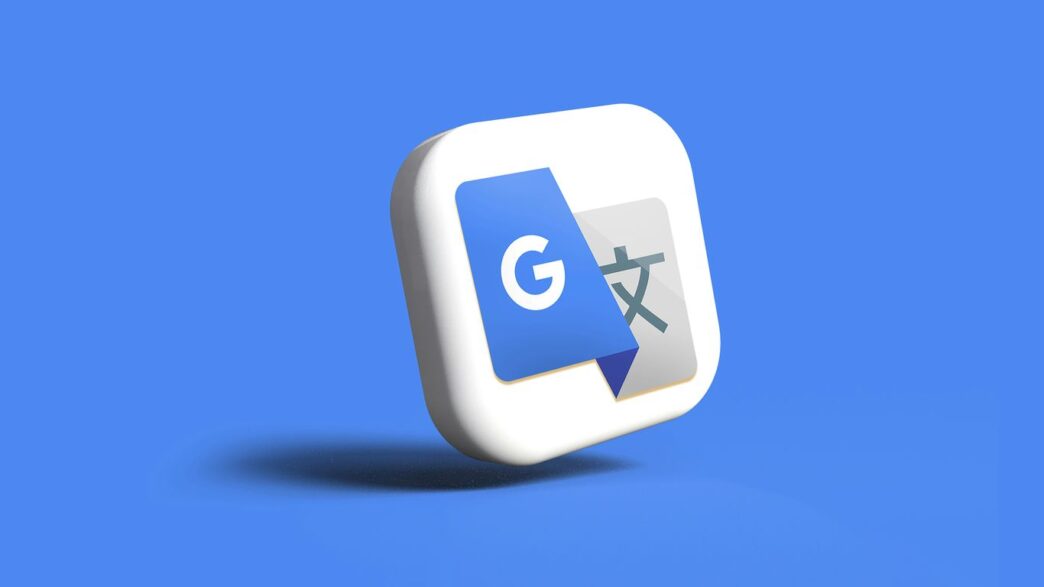Understanding The Google Generative AI Certification
What is the Generative AI Leader Certification?
So, Google’s rolled out a new certification, and it’s called the Generative AI Leader certification. It’s pretty unique because it’s not just for the super techy folks. Think of it as a way to show you really get how generative AI can help businesses, and not just how to code it. It’s designed for people who want to guide their teams and talk about the strategic side of AI. You know, the managers, the project leads, the folks who need to understand the bigger picture. It’s a way to prove you can lead the charge when it comes to using AI in your company.
Why Pursue a Generative AI Certification?
Honestly, AI is becoming a big deal everywhere. You see it popping up in all sorts of jobs, not just the ones you’d expect. Companies are looking for people who know their way around AI, even if they aren’t writing the code themselves. Having this certification from Google Cloud is like a stamp of approval. It shows you’ve got the skills that employers are looking for right now. Plus, getting certified can really help your career move forward, opening up new roles and chances to lead projects. It’s about staying relevant and getting ahead in a world that’s changing fast.
Who is This Certification For?
This certification is really for anyone in a business who wants to understand and use generative AI strategically. That includes:
- Managers and Team Leads: If you’re guiding a team, you need to know how AI can help them work better and smarter.
- Business Strategists and Analysts: Understanding AI’s potential is key to planning for the future of your company.
- Project Managers: You’ll be able to better plan and oversee AI-related projects.
- Anyone in HR, Marketing, Sales, or Finance: AI is impacting all these areas, and knowing the basics is becoming important for everyone.
Basically, if you’re involved in making decisions or guiding work within an organization, and you want to make sure your company is using AI effectively, this certification is for you. It’s not about being a programmer; it’s about being a leader in the age of AI.
Core Components of Generative AI
If you’re curious about what goes into generative AI, let’s break it all down step by step. This section focuses on the basic building blocks and the most important ideas you’ll need to get comfortable with before tackling Google’s certification. Generative AI is more than just cool tech—it’s a set of concepts and skills that are showing up everywhere these days.
Fundamentals of Generative AI
Most folks start by asking, “What actually is generative AI?” Put plainly, it’s software that can produce new things like text, pictures, music, or even video. It’s different from earlier AI that would sort things or suggest products; generative AI can come up with creative outputs you haven’t seen before.
Key things you’ll need to know:
- The difference between old-school AI and generative models
- What “training data” means and how it shapes what the AI can do
- Common types of generative AI: text generators (like chatbots), image creators, etc.
- Why generative AI is being used in all sorts of companies, from small businesses to big names
Techniques to Improve Model Output
People sometimes expect generative AI to get everything right on the first try, but it’s honestly not that simple. There are several tricks and best practices for getting better results from these models.
Here are some approaches:
- Use carefully worded prompts or instructions—this matters a lot!
- Give feedback so the AI learns what you actually want
- Try "prompt-chaining": breaking the task into steps or interacting through a series of questions
- Be aware of common problems like hallucination (when the AI makes stuff up) and how to spot it
| Technique | What It Does |
|---|---|
| Prompt Engineering | Tweaks input for clarity & specificity |
| Feedback Loops | Guides AI toward more useful answers |
| Stepwise Prompting | Breaks requests into smaller tasks |
Understanding Large Language Models
You don’t need a PhD to understand the basics of Large Language Models (LLMs)—the tech behind tools like Google Gemini and ChatGPT.
Think about it like this: LLMs are trained on massive piles of written info—books, news, websites—so they can predict what word (or sentence) should come next in any situation. They’re not ‘thinking,’ they’re pattern-matching really fast.
Three points to keep in mind:
- LLMs are powerful, but not flawless—they can get facts wrong or misunderstand context.
- The bigger the model, the more it can handle, but also the more careful you have to be with how you ask questions.
- Privacy and data security matter a lot, since LLMs can sometimes repeat things they saw in their training data.
Bottom line: Generative AI is changing fast. Get these basics down and you’ll have a stronger handle on what’s possible—and what to look out for as you keep learning.
Leveraging Google Cloud for Generative AI
Google Cloud’s Generative AI Offerings
So, you’re looking into generative AI and how it can help your business. That’s smart. Google Cloud has a whole suite of tools designed to make this easier. Think of it as a toolbox specifically built for AI. They’ve been working on AI for a long time, so they’ve got some pretty advanced stuff ready for you to use. It’s not just about having the tech; it’s about how Google Cloud helps you actually use it to do things like make customers happier or help your developers build new applications faster. They really focus on making AI work for businesses, not just for tech wizards.
Tools and Platforms for AI Innovation
When we talk about Google Cloud’s AI tools, we’re talking about things like Gemini, which can help with writing emails or analyzing data, and NotebookLM, which is great for working with documents. There’s also Google AI Studio, a place where you can experiment with AI models. These aren’t just abstract concepts; they’re practical tools you can start using. The certification actually walks you through how to use them, with hands-on exercises. It’s like getting a guided tour of the AI playground, showing you what’s possible and how to get started. They even have ways to help you improve what the AI produces, which is pretty important when you’re trying to get real work done.
Integrating AI into Business Workflows
Okay, so you’ve got the tools, but how do you make them part of your everyday work? That’s where integrating AI into your business workflows comes in. It’s about making AI a natural part of how your company operates. For example, some companies are already using Gemini to save employees time on tasks like writing emails. Others are using it to quickly get insights from sales data. Formula E even uses it to summarize long race commentary into short podcasts. The certification covers how to think about these kinds of applications and how to introduce them responsibly. It’s not just about the technology itself, but about how it can actually change how work gets done, making things more efficient and maybe even a bit more interesting.
Driving Business Transformation with AI
So, you’ve got a handle on what generative AI is and maybe even how to use some of the tools. That’s great! But how does this actually help a business? It’s not just about playing around with new tech; it’s about making real changes that affect the bottom line. Thinking about how AI fits into your company’s big picture is where the magic really happens.
Business Strategies for Gen AI Solutions
When you’re looking at bringing AI into your business, it’s not a one-size-fits-all thing. You need a plan. What problems are you actually trying to solve? Are you looking to speed up how you create content, make customer service better, or find new ways to analyze data? Having clear goals makes a huge difference.
Here are a few ways businesses are using AI:
- Automating Repetitive Tasks: Think about things like sorting emails, scheduling meetings, or even writing basic reports. AI can take over a lot of this, freeing up your team for more important work.
- Improving Customer Interaction: AI-powered chatbots can handle common questions 24/7, and AI can help personalize marketing messages to make customers feel more understood.
- Boosting Creativity and Innovation: AI can be a partner in brainstorming new product ideas, writing marketing copy, or even generating code snippets, speeding up the development process.
- Data Analysis and Insights: AI can sift through massive amounts of data much faster than humans, spotting trends and patterns that might otherwise be missed.
Organizational Adoption of Generative AI
Getting a whole company to adopt new technology can be tricky. It’s not just about buying the software; it’s about people. You need to think about training your employees and making sure they feel comfortable using these new tools. Some folks might be excited, others might be a bit hesitant, and that’s normal.
Here’s a look at what’s involved:
- Leadership Buy-in: If the people at the top aren’t on board, it’s hard to get everyone else to follow.
- Clear Communication: Explain why the change is happening and what the benefits are for everyone.
- Training and Support: Offer easy-to-access training, like workshops or online courses, and make sure there’s help available when people get stuck.
- Start Small: Sometimes it’s best to test AI in one department or for a specific project before rolling it out everywhere.
It’s also important to think about the ethical side of things. How are you using AI responsibly? Are you being transparent with customers and employees about how AI is being used?
Measuring the Impact of AI Initiatives
How do you know if all this AI stuff is actually working? You need to measure it. This means looking at numbers and seeing if you’re hitting those goals you set at the beginning. It’s not always easy to put a dollar amount on everything, but you can look at things like:
- Efficiency Gains: Are tasks getting done faster? Is your team producing more output?
- Cost Savings: Are you spending less on certain operations because AI is handling them?
- Customer Satisfaction: Are customers happier with the service they’re receiving?
- Employee Productivity: Are your employees able to do more or focus on higher-value work?
For example, a company might track how long it takes to respond to customer inquiries before and after implementing an AI chatbot. Or they might measure the increase in marketing content produced after using AI writing assistants. Seeing these kinds of improvements helps justify the investment and shows where you can do even better.
Career Advancement Through Certification
So, you’re thinking about getting this Google Generative AI certification? That’s a smart move, especially if you’re looking to get ahead in your career. It’s not just about learning new stuff, though that’s a big part of it. This certification can actually open up some pretty interesting doors.
Accelerating Your Career Path
Let’s be real, the job market is always changing, and right now, AI is a huge part of that change. Having a certification like this shows employers that you’re up-to-date with the latest technology and that you know how to use it. It’s like a stamp of approval that says, "Hey, I’m ready for the future of work." In fact, a lot of people who get Google Cloud certifications say it helps them get promoted faster. It gives you skills that companies are actively looking for, which can make a big difference when you’re trying to move up.
New Managerial Opportunities
This certification isn’t just for individual contributors. It’s also designed to help you lead. Think about it: if you understand generative AI and how it can help a business, you’re in a great position to guide teams and projects. You can be the person who figures out how to use AI to solve problems or create new opportunities. This kind of strategic thinking is exactly what managers and leaders need. It can lead to roles where you’re not just doing the work, but directing others and shaping the company’s AI strategy. It’s a chance to step into more responsibility and influence.
Becoming an AI Innovation Champion
Ultimately, getting certified means you can become a go-to person for AI within your organization. You’ll be able to talk confidently about what generative AI can do, how it can be used responsibly, and how it can help the business grow. You’ll be the one driving new ideas and helping your company stay competitive. It’s about being at the forefront of change and helping your workplace adapt and thrive in this new AI-driven world. You’re not just learning; you’re becoming a leader in innovation.
Preparing for the Generative AI Certification Exam

So, you’re thinking about getting that Google Generative AI Leader certification? That’s a smart move. It shows you know your stuff when it comes to how AI can actually help a business. But like anything worth doing, it takes a bit of prep. Don’t just wing it; let’s talk about how to get ready.
Comprehensive Learning Paths
Google has put together some really helpful, free training to get you exam-ready. These aren’t just dry lectures; they’ve got interactive bits and even podcast-style videos. You’ll get to play around with tools like NotebookLM and Gemini, which is way better than just reading about them. The whole learning path takes about 7 to 8 hours, which is pretty manageable. It covers everything from the basics of what generative AI is, beyond just chatbots, to how it can be used strategically. You’ll also learn about the bigger AI picture and how Google Cloud fits into it all.
Hands-On Experience with AI Tools
Reading about AI is one thing, but actually using it is another. The training materials give you chances to try out tools like Gemini for Workspace and NotebookLM. This practical experience is super important. You’ll learn how to actually build things, like automated workflows, and how to talk to AI models effectively to get the results you need. It’s not just about knowing the theory; it’s about knowing how to make these tools work for you and your organization.
Key Domains Covered in the Exam
The exam itself is about 90 minutes long and focuses on four main areas. About 30% of the test is on the basic ideas of generative AI – making sure you know the lingo and the concepts. A big chunk, around 35%, is about what Google Cloud offers in the AI space and how it helps businesses and developers. Then, there’s about 20% on how to actually make AI models work better, like improving their output. The last 15% is about business strategies – how to use AI safely and responsibly to actually transform your company. Knowing these percentages can help you focus your study time.
Your AI Future Starts Now
Look, AI is changing things fast, and if you want to keep up, you need to get on board. This Google certification isn’t just another piece of paper; it’s a way to show you know how to actually use generative AI in a business setting. Think about it – being the person who understands how this tech can help your company, and not just the tech people. It’s about being ready for what’s next and making sure your career stays relevant. So, if you’re looking to make a real difference and get ahead, this is a solid step to take.














